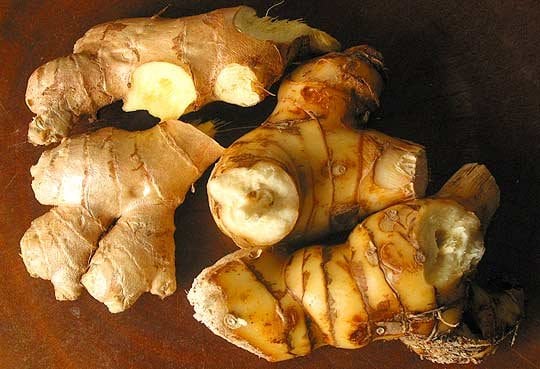As consumers develop more awareness of foods from different cultures, emphasis on regions tends to overtake the broader concept of “ethnic” cuisine as a Euromonitor US analyst recently pointed out. (This appears to be further evidenced by two other NRA top trending flavor picks: Korean and Peruvian cuisine.)
Malaysia: more about spice than heat
Spices such as turmeric, chilies, cumin, coriander and cardamom are commonly used across many Southeast Asian dishes, but Malaysian cuisine combines these spices with aromatics such as galangal, lemongrass, ginger, tamarind and curry leaves to create a deeply-layered, complex flavor without the spicy heat of other Southeast Asian cuisines. As the center of the world's spice trade during the 15th century, Malaysia's own cooking style has been infused with Chinese, Indian and Nonya (mixed Southeast Asian descent) flavors over the centuries, as Malaysia’s food ambassador Christina Arokiasamy points out.
“The Chinese, Malay, Indian and Nonya cultures are all very strong in their culinary heritage. Malaysia represents them coming together and merging their cooking styles,” Arokiasamy told FoodNavigator-USA. “In Malaysian cooking you can taste the spice of India, the aromatics of Malaysia and the flavors of China.”
Bridging the gap between lesser-known and well-known Southeast Asian cuisines
Many of the common aromatics that link Malaysian dishes exhibit very familiar flavors to consumers (citrus, warm spice, etc), Arokiasamy said, which can help bridge the gap between the familiar and the unknown.
“Kaffir lime has lime, orange, lemon rind flavors, and lemongrass has a concentrated citrus aroma. People are very familiar with these flavors, and they can be combined with better known ingredients like ginger, garlic and coconut for an interesting yet familiar, beautiful flavor.”

Some of the staple sauces and spice blends—with an emphasis on spicy, citrusy, sweet and hot flavors, include: rendang, a blend of ginger, garlic, shallots and galangal that is typically ground into a paste and then incorporated into sauces or rubbed on meat and vegetables; masak merah, a Southeast Asian take on tomato sauce, which combines concentrated tomatoes with heady aromatics like cardamom, cloves, cinnamon and star anise along with turmeric, garlic and ginger; salty-sweet peanut sauce, with roasted peanuts, tamarind pulp, soy sauce and palm sugar; and a veritable rainbow of coconut curries, which range in heat level and spice.
Many of these ingredients can boost packaging claims—both given the growing body of research touting their health benefits (see here, here and here) as well as the ability of these flavorful ingredients to lower overall salt content in formulas. “Many of these spices are flavor lifters in addition to their antioxidant content. Spices can—and should—take the place of salt and preservatives like MSG.”
Solutions for the time-strapped consumer
The primary deterrent for many consumers when it comes to cooking any Southeast Asian dish at home is long ingredient lists (with some unfamiliar names) and time-consuming preparation—peeling, chopping and blending various roots, herbs and other aromatics.
“Time-strapped American cooks often not only cannot find some of these ingredients, but they don’t understand how to use some of these products,” she said.
Thus, manufacturers have an opportunity to capitalize on offering time savings through products that highlight the flavors of an untapped corner of this popular region.
“Many Americans are traveling to Mediterranean countries, and they understand a broad range of Italian, Spanish and French food. But there is a big blue sea out there that is still largely untapped. There are opportunities for manufacturers here, which many of them haven’t grasped.”
